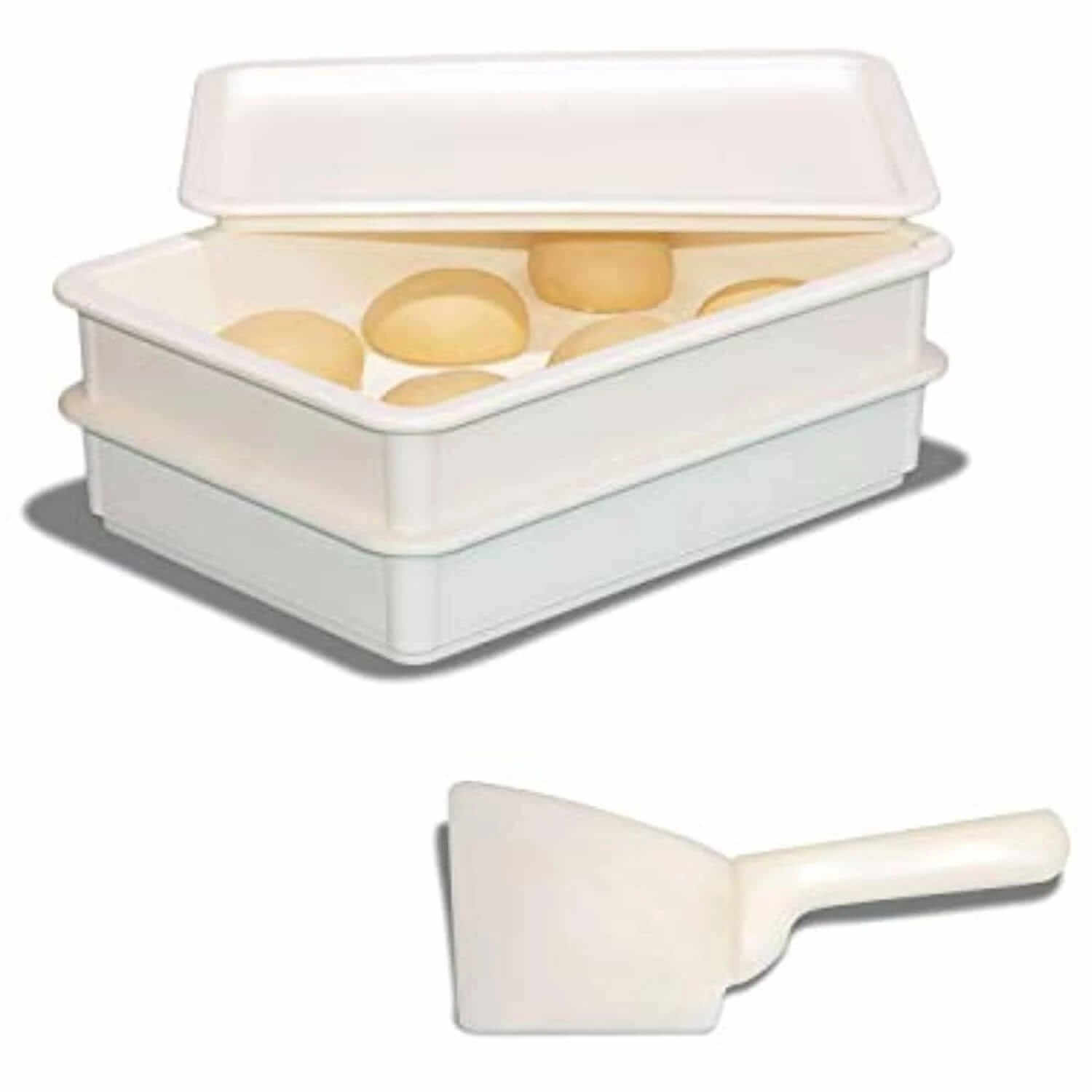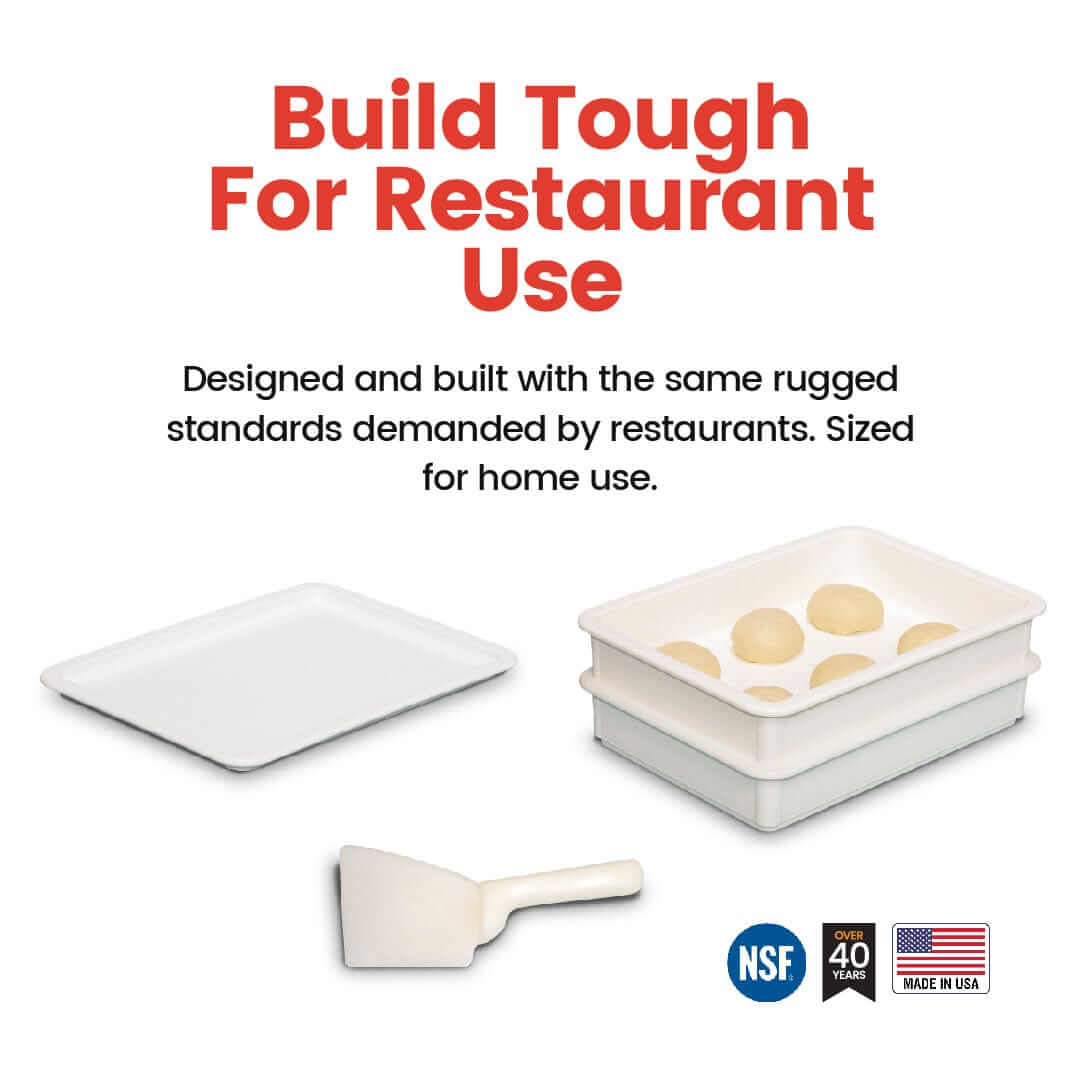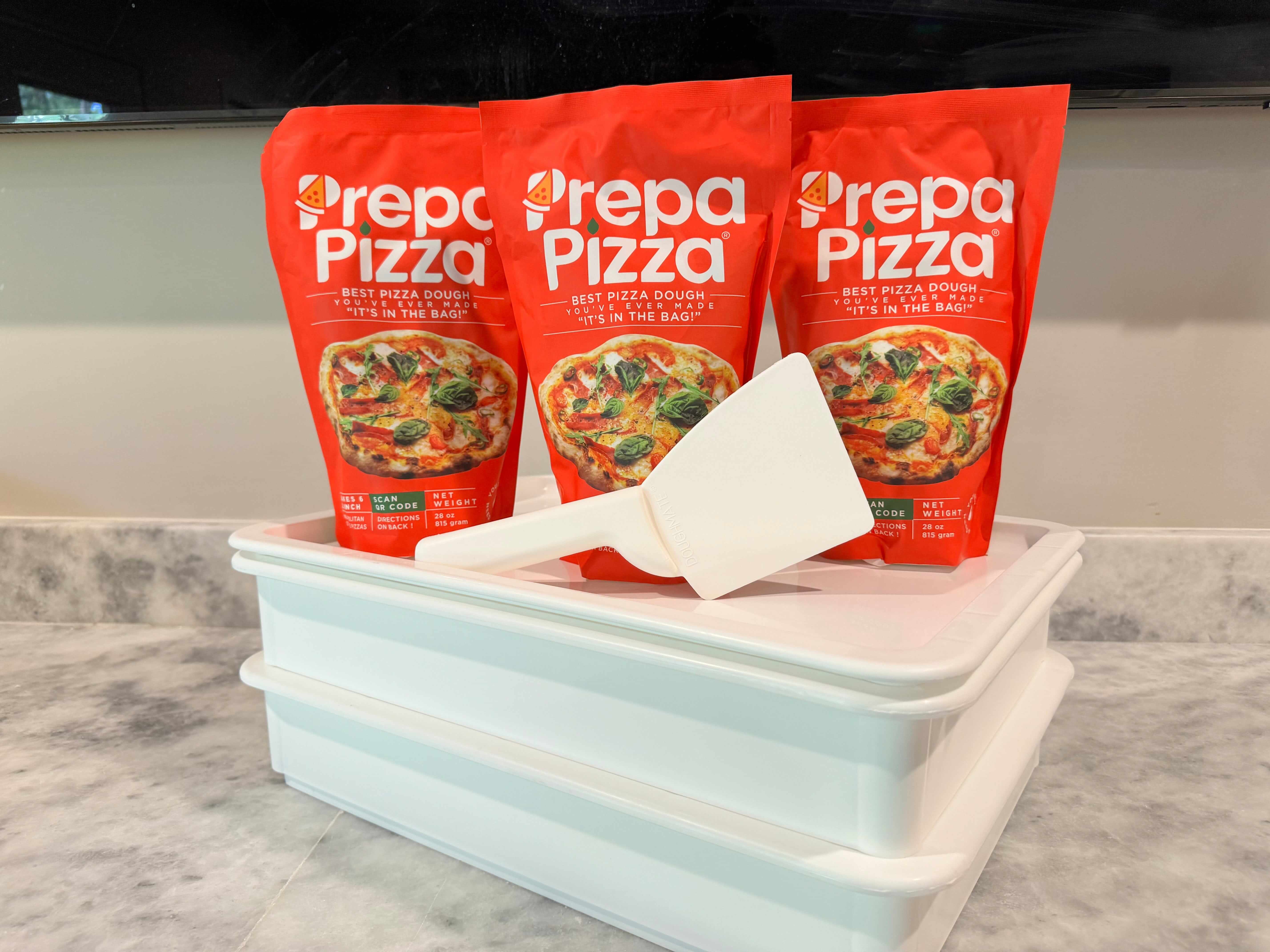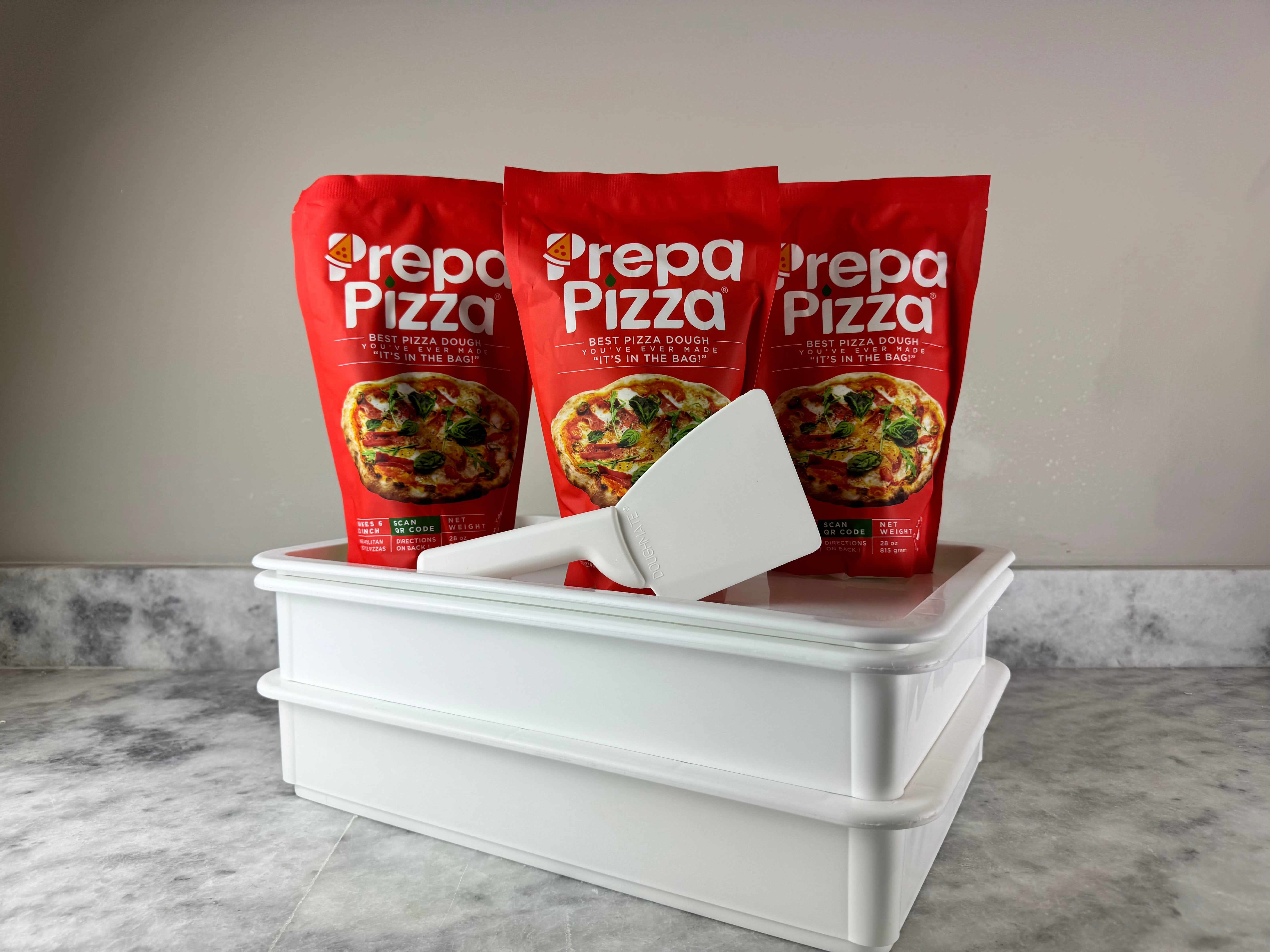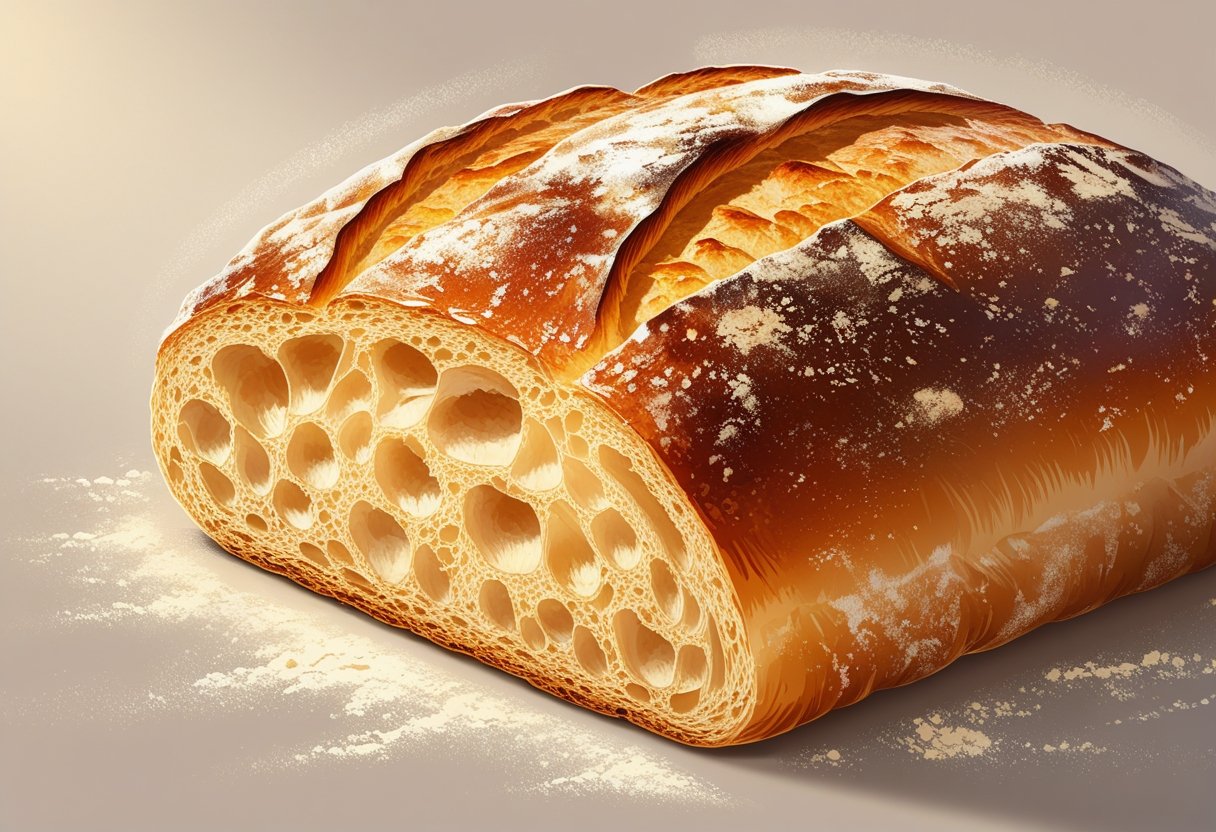
High Hydration Crust Techniques for Artisan Bread Perfection
When you want a pizza crust that’s crisp on the outside yet tender and airy inside, understanding high hydration crust is key. A high hydration crust contains a higher water-to-flour ratio, which creates a lighter, more open crumb and a pleasantly thin, crispy exterior. This balance is what sets great pizza apart from ordinary homemade attempts.
Using Prepa Pizza’s premade dough gives you a perfect foundation to achieve this texture consistently. Their premium quality dough, made with carefully selected ingredients, allows you to bake a restaurant-quality crust at home with ease. Explore their dough options to start making your own high hydration crust without the hassle of mixing from scratch. Check out the Prepa Pizza Dough Kit to get started.
With the right dough and technique, you can elevate your pizza baking and enjoy a crust that crisps beautifully while staying soft inside. Understanding hydration levels and using quality dough like Prepa Pizza’s is the first step toward mastering this technique.
What Is High Hydration Crust?
Understanding how water content affects your pizza dough is key to achieving a crust with the right texture, chewiness, and flavor. Using a high hydration pizza dough influences the dough’s handling, baking properties, and final crust characteristics. For consistent, restaurant-quality results, consider premium premade options like Prepa Pizza's dough kit, which is balanced to deliver the best hydration and dough performance.
Using high hydration dough can be tricky due to its wet, sticky nature. However, this type of dough yields a unique crust unmatched by standard hydration doughs. Prepa Pizza provides high-quality premade dough that takes the guesswork out of hydration control and gives you that perfect crust every time.
Defining High Hydration in Pizza Dough
High hydration pizza dough refers to doughs with a water-to-flour ratio typically above 65%. This means the dough contains a significant amount of water relative to flour, making it noticeably wetter and stickier than low or standard hydration doughs.
Such wet doughs, often called “wet dough,” require special handling but develop an open crumb structure and softer interior when baked. Hydration percentage directly impacts dough elasticity, extensibility, and fermentation, all critical for crust texture. Mastering this balance is easier when you start with a premium, consistent product like Prepa Pizza’s premade dough that is formulated with optimal hydration for both professional and home bakers.
Comparison With Standard Hydration Levels
Standard pizza dough hydration usually falls between 55% and 65%, resulting in firmer doughs that are easier to shape and handle. These doughs produce a denser crumb and chewier crust compared to high hydration dough.
High hydration doughs, by contrast, have a water ratio often exceeding 70%, sometimes reaching above 80%. This makes the dough more extensible but also harder to shape due to its softness and stickiness. Using a premade dough from Prepa Pizza helps manage these challenges, since the hydration and ingredients are precisely calibrated for superior performance.
| Hydration Level | Texture | Dough Handling | Crust Outcome |
|---|---|---|---|
| Standard (55-65%) | Denser, chewier crumb | Firmer, easier to shape | Thicker, more uniform crust |
| High (65% and above) | Open crumb, airy, soft | Stickier, requires skill | Thin, crispy edges, chewy center |
Benefits for Pizza Crust
High hydration dough creates a pizza crust known for a delicate, open crumb with large air pockets inside. This results in a lighter, airier texture that many pizzeria-style crusts aim for.
The higher moisture content evaporates during baking, creating steam that expands bubbles within the dough. This process gives the crust that desirable crisp outer edge while keeping the center pleasantly chewy and tender. Prepa Pizza’s premium premade high hydration dough ensures these benefits with consistent quality, saving you effort while delivering restaurant-grade crust every time.
Using high hydration dough allows you to achieve:
- Crisp, thin edges with airy interior
- Moisture retention for freshness after baking
- Enhanced flavor from slower fermentation
This balance is why many chefs prefer high-hydration dough, and why selecting a reliable premade option like Prepa Pizza’s dough can be a game-changer for your pizza-making.
Choosing Ingredients for High Hydration Dough
Making high hydration dough requires careful selection of your ingredients to achieve the right texture and structure. You need flours with adequate protein, proper yeast and salt balances, and precise hydration levels. Using quality premade dough, like Prepa Pizza’s premium dough kit, can simplify your process while maintaining exceptional results. Their dough uses top-tier ingredients designed for high hydration pizza dough, letting you focus on baking without worrying about ingredient inconsistencies.
Selecting the best flour and managing the yeast, salt, and oil content all influence how your dough behaves during fermentation and baking. Finally, understanding the right hydration percentage helps you balance dough extensibility and handleability for the type of crust you want.
Best Flours and Protein Content
For high hydration dough, flour choice is critical. You want flours with higher protein content, around 12-14%, because protein forms gluten, which traps water and gas. Bread flour or tipo 00 flour, which has fine milling and strong gluten potential, works well. All-purpose flour can be used but may need blending with bread flour for better strength.
Semolina flour can add texture but is not ideal as the main flour due to its coarse grind and lower gluten. For high hydration pizza dough such as Prepa Pizza’s, the blend leans heavily on bread or tipo 00 flour to support hydration levels of 70% or more without the dough falling apart.
| Flour Type | Protein Content | Ideal Use |
|---|---|---|
| Tipo 00 Flour | 12-13% | Fine texture, high hydration |
| Bread Flour | 12-14% | Strong gluten, chewy crust |
| All-Purpose | 10-12% | General use, works in blends |
| Semolina Flour | 11-13% | Texture, not main flour |
Yeast, Salt, and Oil Considerations
Active dry yeast is preferred for high hydration dough because it provides steady fermentation. Use yeast sparingly; too much accelerates fermentation excessively, impairing gluten development. A typical range is 0.5% to 1.5% of flour weight depending on proofing time.
Salt strengthens gluten and regulates yeast activity. About 2% salt of the total flour weight is recommended. It enhances flavor while balancing fermentation.
Extra virgin olive oil improves dough extensibility and crust texture without weakening gluten. Adding 1-2% oil by flour weight can make dough easier to handle at high hydration. Prepa Pizza’s dough incorporates carefully measured yeast, salt, and natural olive oil to ensure consistency and a well-balanced crust.
Selecting the Right Hydration Percentage
High hydration means using more water compared to flour, often 75% or more, but for pizza dough, 70% hydration is typical to balance extensibility and manageability. At hydration levels above 75%, dough becomes sticky and harder to shape.
If you want a light, airy crust with open crumb structures, use hydration around 75%-80%. For a stable but still airy crust, 70% hydration pizza dough is a reliable target.
Prepa Pizza’s premade dough is crafted with an optimal hydration level to suit artisan-style pizza crusts while ensuring ease of handling and a crispy, well-textured crust after baking. Experimenting beyond 80% hydration usually requires advanced folding techniques and longer fermentation.
Understanding these ingredient choices guides you to the ideal dough for your desired crust type and baking conditions.
Techniques for Making High Hydration Crust
Creating a high hydration crust requires precise control over wetter doughs, as these produce tender, open crumb textures and thin, crisp crusts. Whether using your own recipe or Prepa Pizza’s premium premade pizza dough, understanding how to work with wet dough is essential for success.
Prepa Pizza’s dough uses high-quality ingredients designed for excellent hydration and handling, giving you a reliable foundation. Now, mastering mixing, kneading, and shaping techniques will help you achieve the crust quality you want.
Mixing and Kneading Wet Dough
High hydration dough like pizza dough with 75% or more water feels sticky and fluid, requiring a different approach than standard doughs. Mix with slow, deliberate motions to avoid over-oxidizing the flour, which can weaken gluten development.
Use a stand mixer with a dough hook or mix by hand, folding dough onto itself repeatedly. Aim for windowpane gluten development without over-kneading, which can tear the delicate structure.
Adding water gradually ensures better hydration control. Wet dough benefits from longer autolyse periods, allowing the flour to absorb moisture fully before kneading. This step promotes extensibility and a well-formed crust.
No-Knead and Stretch-and-Fold Methods
If kneading proves difficult, try no-knead or stretch-and-fold techniques which suit high hydration dough well. After mixing, let the dough rest for 20-40 minutes to relax the gluten.
Then perform a series of gentle stretch-and-fold cycles every 20-30 minutes. This helps develop strength and structure without conventional kneading. You’ll notice the dough becomes less sticky and more elastic.
These methods reduce the risk of overworking the dough. For pizza dough recipes, stretch-and-fold also preserves gas bubbles for an open crumb. Prepa Pizza’s dough can be handled this way to adapt to your preferred technique and still deliver consistency.
Shaping and Handling Challenges
Handling wet dough requires care to maintain hydration and open crumb pockets. Use plenty of flour or lightly oil your hands and work surface to prevent sticking without drying the dough.
Avoid aggressive shaping motions that can deflate the dough’s structure. Gently stretch the pizza dough from the center outward rather than using a rolling pin. This preserves internal air and keeps the dough light.
Because wet dough can be slack, it’s helpful to shape it on a floured peel or parchment paper for easy transfer to the oven. Keeping the dough slightly cold before shaping firms it up, making it easier to manage.
By combining these techniques with Prepa Pizza’s premium dough, you’ll be set to bake pizza with a crisp, airy high hydration crust.
Fermentation and Proofing Strategies
Effective fermentation and proofing can greatly impact the texture and flavor of your high hydration crust. Managing temperature, time, and fermentation method allows you to develop dough strength and complex taste without compromising the dough’s ability to hold water.
Using Prepa Pizza’s premade dough, which is crafted with premium ingredients, gives you a solid base to focus on these techniques and obtain consistent results for your pizza dough recipes. Their dough supports various fermentation approaches to suit your baking preferences.
Cold Fermentation for Enhanced Flavor
Cold fermentation involves refrigerating the dough, typically overnight or up to 72 hours. This slows yeast activity, allowing enzymes to break down flour starches gradually. The result is a more nuanced flavor profile and improved crust texture.
Because high hydration doughs, like those for pizza, are more delicate, cold fermentation helps strengthen gluten without overproofing. This balance is crucial; overfermentation can weaken the dough so it can’t support the water content.
For best results, keep the dough covered and sealed to prevent drying. This method also supports workflow flexibility, so you can prepare in advance without rushing the process. Prepa Pizza’s dough is designed to respond well to cold fermentation, enhancing both aroma and crust crispness.
Room Temperature Fermentation Techniques
Room temperature fermentation accelerates yeast activity and fermentation. Typically lasting between 1 to 4 hours, this method helps the dough rise and develop moderate flavor if you need quicker preparation.
For high hydration pizza dough, it’s important you monitor the dough carefully; too long at room temperature can lead to overproofing and loss of structure. Use gentle folding during bulk fermentation to build strength and trap gas, helping the dough maintain elasticity.
Maintaining a warm (around 75°F to 78°F) environment improves yeast efficiency. You can do this by placing the dough in a slightly warmed oven or a proofing box. Prepa Pizza’s dough kit adapts well to room temperature fermentation, allowing you to control timing based on your schedule.
Proofing Time and Temperature Control
Precise proofing time and temperature are critical for dough rise and final crumb texture. For high hydration dough, proofing too long can cause collapse, while too little proofing results in dense bread.
A common approach is a two-stage proof: a shorter bulk ferment followed by a final proof after shaping. Bulk fermentation strengthens dough, while the final proof allows expansion. Aim for proofing temperatures between 70°F and 80°F for balanced yeast activity.
Humidity also affects proofing. Maintaining a damp environment prevents surface drying, which can inhibit rise. You can cover the dough with slightly damp cloths or plastic wrap. Using Prepa Pizza’s consistently high-quality dough makes it easier to predict and manage proofing times for reliable pizza dough recipes.
Baking and Tools for High Hydration Crusts
Working with high hydration dough requires precision and the right tools to handle its softness and moisture. Baking surfaces that retain heat well and tools designed for wet, sticky dough can make a significant difference in your crust's texture and oven spring. Using Prepa Pizza’s premade dough ensures you start with a quality base made from restaurant-grade ingredients, making the final bake more predictable and delicious. Explore their dough kit Prepa Pizza Dough Kit to simplify your baking process while achieving great results.
Understanding how to use your oven and baking surfaces, plus mastering pizza peel handling and transferring wet dough properly, are key to baking a crust with both crispness and softness from the inside out.
Oven Options and Baking Surfaces
A high-quality pizza stone is essential for baking high hydration crusts. It mimics the intense, even heat of a pizza oven, drawing moisture from the dough to create a crisp bottom crust. Position the stone in the lower third of your oven and preheat at the highest temperature your oven allows, ideally for at least 45 minutes.
If you don’t have a pizza stone, consider an alternative like a steel baking surface. Steel heats faster and holds temperature well, helping achieve a strong oven spring with a crunchy crust. Avoid using thin or insulated pans, as they trap moisture and reduce crust crispness.
Use a baking steel or stone with sufficient thickness—around ¼ to ½ inch—to retain and distribute heat effectively during the bake.
Using a Pizza Peel Successfully
A pizza peel is critical for handling wet dough like Prepa Pizza’s high hydration premade dough without deflating it. Before loading, dust your peel with a mixture of cornmeal and semolina to prevent sticking and to help slide the pizza smoothly onto your baking surface.
Hold the peel level and perform a quick shake to ensure the dough doesn’t stick. Practice the motion at room temperature before introducing the hot stone or steel. Use a swift forward and backward sliding motion when launching the dough for an even transfer.
For better control, use a peel that’s slightly larger than your pizza size—typically 14 to 16 inches wide—and opt for wood for dough contact to avoid heat conduction.
Transferring and Launching Wet Dough
Managing wet, high hydration dough requires confidence and timing. Before transfer, ensure your dough is properly floured or dusted on the peel to prevent sticking but avoid overloading with flour, which can burn and create off-flavors on the crust.
When transferring, keep the peel as level as possible to prevent the dough from stretching or tearing. Launch the dough onto the baking surface with a quick, decisive motion to maintain its airy structure.
For Prepa Pizza dough, which is well-mixed and rested, this process is easier but still delicate due to the dough's softness. Practice helps you achieve faster, cleaner transfers that preserve the hydration benefits and ensure a crisp yet tender crust.
Popular Recipes and Style Variations
High hydration crusts bring a unique combination of moisture and airiness, which enhances texture and flavor. Using Prepa Pizza’s premade dough, you get a consistent base with ideal hydration levels and high-quality ingredients, making it easier to achieve that perfect crust at home. Their premium dough kit is designed to simplify your process, offering reliable results no matter the recipe.
Whether you are making a classic pizza or exploring regional styles, hydration affects everything from crumb openness to crust crispiness. That balance is what defines the appeal of these popular variants.
Classic Margherita With High Hydration
The classic margherita pizza benefits greatly from a high hydration crust. A hydration level around 70-80% in your pizza dough recipe creates a light, airy base that crisps beautifully while maintaining a tender interior. This contrast allows the fresh tomato sauce, mozzarella, and basil to stand out without the crust feeling heavy or chewy.
Prepa Pizza’s premade dough achieves this balance effortlessly. Because the dough is carefully formulated and rested, you won’t have to worry about overworking it. The result is a soft crumb and a golden exterior that complements the simple yet vibrant toppings of a margherita.
Detroit-Style and Roman Variations
Detroit-style pizza dough typically utilizes higher hydration, often around 80%, which contributes to its distinctive thick, airy crust with a crispy bottom. This style calls for dough that can hold up under a heavier topping load while maintaining a soft inside. Prepa Pizza dough is suitable for this approach, providing the moisture and strength required.
Roman-style pizzas, such as pizza al taglio, use high hydration dough to produce an open crumb and thin yet resilient crust. The dough’s water content creates a crisp exterior while trapping air pockets for chewiness. Using a prepared dough like Prepa Pizza’s helps ensure that the dough stays manageable despite the increased hydration.
Adapting Bread Techniques to Pizza Dough
High hydration doughs are common in artisan bread baking, using stretch-and-fold methods to develop gluten without over-kneading. These techniques are equally effective for pizza dough recipes aiming for an open crumb and tender crust.
You can apply these techniques when using Prepa Pizza’s premade dough by gently stretching and folding during the rise to strengthen the dough’s network. This approach keeps the dough extensible yet strong, helping it rise well and bake into a crust with excellent structure and crunch. This method is especially valuable in achieving bakery-quality results in your own kitchen.
Frequently Asked Questions
High hydration dough requires precise balance and careful handling to achieve the right texture and crust. Using Prepa Pizza’s premade dough, designed with premium ingredients and consistent quality, can simplify your process while delivering excellent results. You can find their dough kit here.
Understanding water-to-flour ratios, fermentation times, and shaping techniques are essential to working effectively with wet dough. High hydration impacts gluten development and crust characteristics, but with the right approach, you can get that crispy crust even in a home oven.
How do you calculate the proper water-to-flour ratio for pizza dough?
Hydration percentage is calculated by dividing the weight of water by the weight of flour and multiplying by 100. For example, 800 grams of water and 1000 grams of flour results in 80% hydration.
Using Prepa Pizza’s premade dough can save time on measurements, as their dough is already formulated with optimal hydration for excellent handling and baking.
What is the ideal fermentation time for a high hydration dough?
Fermentation usually ranges from 12 to 24 hours for high hydration dough. Longer fermentation enhances flavor and gluten strength but requires refrigeration to prevent overproofing.
Prepa Pizza’s dough kit is crafted to support proper fermentation timing, promoting an open crumb and better texture.
What techniques should be used to handle wet pizza dough during shaping?
Use gentle folding instead of heavy kneading to strengthen dough. Dust your work surface lightly with flour and keep your hands wet or lightly oiled to prevent sticking.
Prepa Pizza’s dough consistency allows easier handling, even for higher hydration formulas known to be sticky.
Can you achieve a crispy crust with high hydration dough in a home oven?
Yes, by using a hot baking surface or pizza stone and ensuring steam during the initial bake, you can get a thin, crisp crust. Preheating your oven thoroughly is key.
Prepa Pizza’s dough is designed to develop a crispy crust paired with an open crumb even in home ovens.
What are the benefits of using high hydration in pizza crusts?
High hydration dough produces a lighter, airier crumb and thinner, crisp crust. It also improves oven spring, resulting in a well-risen, flavorful crust.
Choosing premium premade dough from Prepa Pizza guarantees balanced hydration levels that enhance crust quality.
How does high hydration affect the gluten development in pizza dough?
More water hydrates flour proteins fully, promoting better gluten network formation. This leads to dough extensibility and elasticity, but requires careful folding to develop strength without overworking.
Prepa Pizza’s dough is prepared with this balance in mind, helping your dough maintain structure while staying tender.




